 |
| Sol 333 view after a 16m drive. Click for full size. (NASA/JPL/Abraham Samma) |
 |
| NASA/JPL/UA/annotation by me |
 |
| Sol 333 view after a 16m drive. Click for full size. (NASA/JPL/Abraham Samma) |
 |
| NASA/JPL/UA/annotation by me |
 |
| Map showing Curiosity's progress up to sol 329 (NASA/JPL/UA) |
 |
| Engineering diagram showing where MARDI is located (NASA/JPL) |
 |
| Two MARDI shots comparing the change in terrain texture. From layered terrain to a rocky plain (NASA/JPL/MSSS/Abraham Samma) |
 |
| Sol 329 navigation mosaic showing Glenelg and two sets of tracks. The right are new and the left are old ones made last year leading to Rocknest where Curiosity scooped (NASA/JPL/Abraham Samma) |
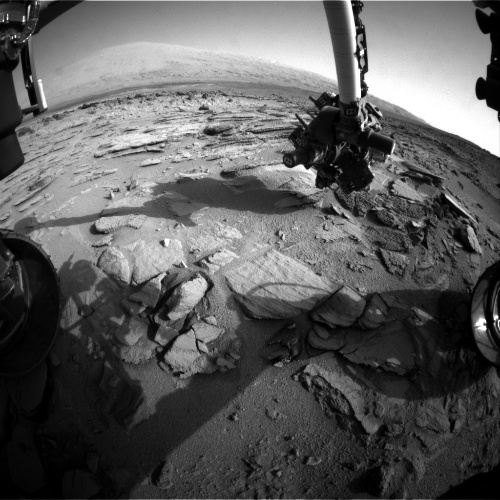 |
| Front Hazard Avoidance Camera image taken on sol 323 showing contact science done on Shaler (NASA/JPL) |
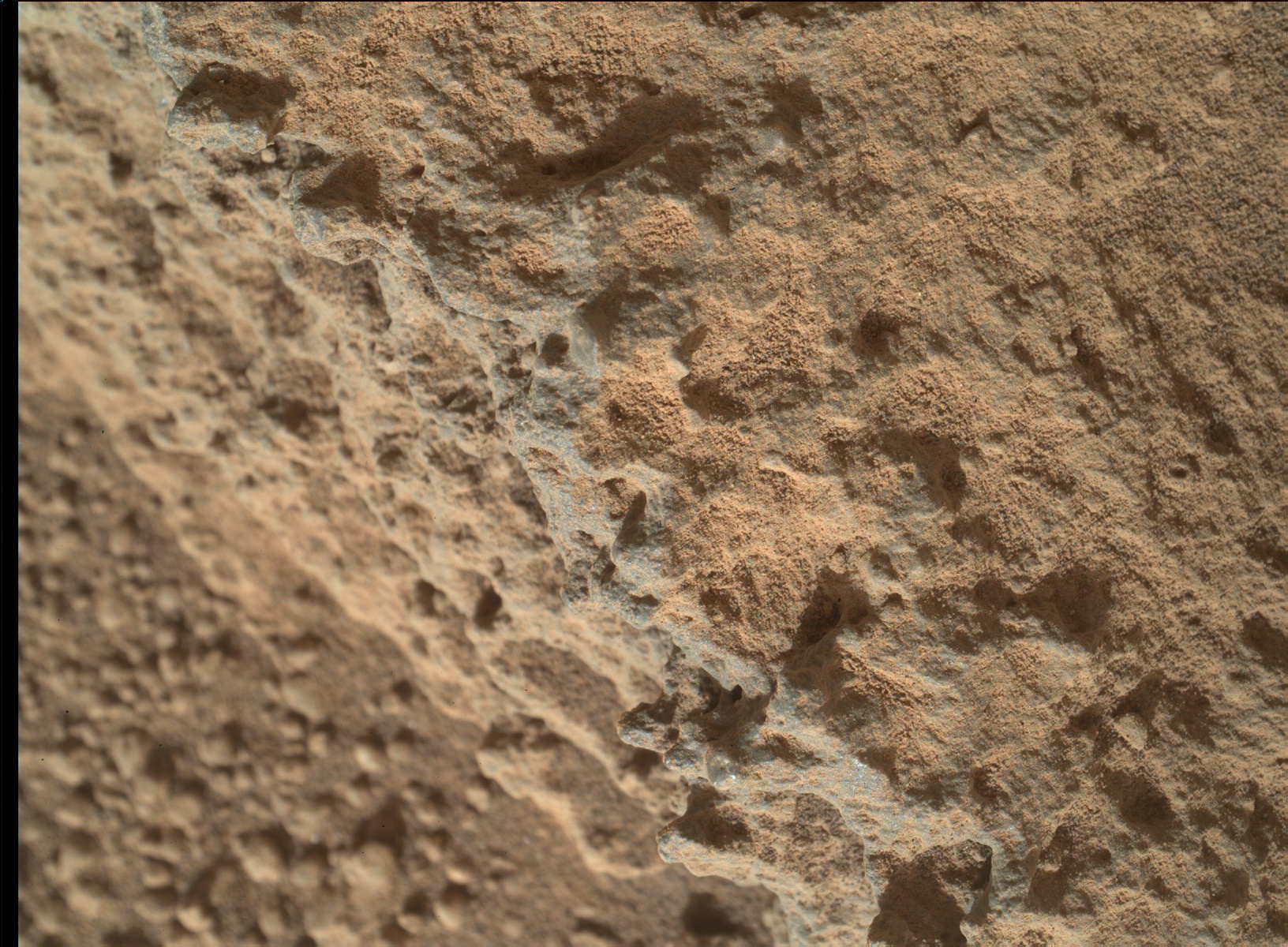 |
| MAHLI image taken on sol 323 showing Shaler's scalloped and pitted surface. (NASA/JPL/MSSS) |
| Navigation camera image taken on sol 324 after the short reverse drive from Shaler (NASA/JPL) |
 |
| Mastcam right eye mosaic showing part of the dark dune that the rover team wishes to avoid and dark outcrop exposures of ancient rock at the base of the mountain (NASA/JPL/MSSS/mosaic by Abraham Samma) |
 |
| My colleagues and I in the town of Mpwapwa central Tanzania posing for a shot after completing medical fieldwork (credit: Monica Shayo) |
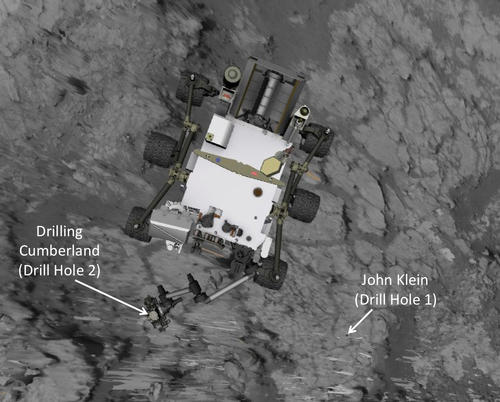 |
| A computer model of Curiosity depicting its sol 274 position next to Cumberland (NASA/JPL) |
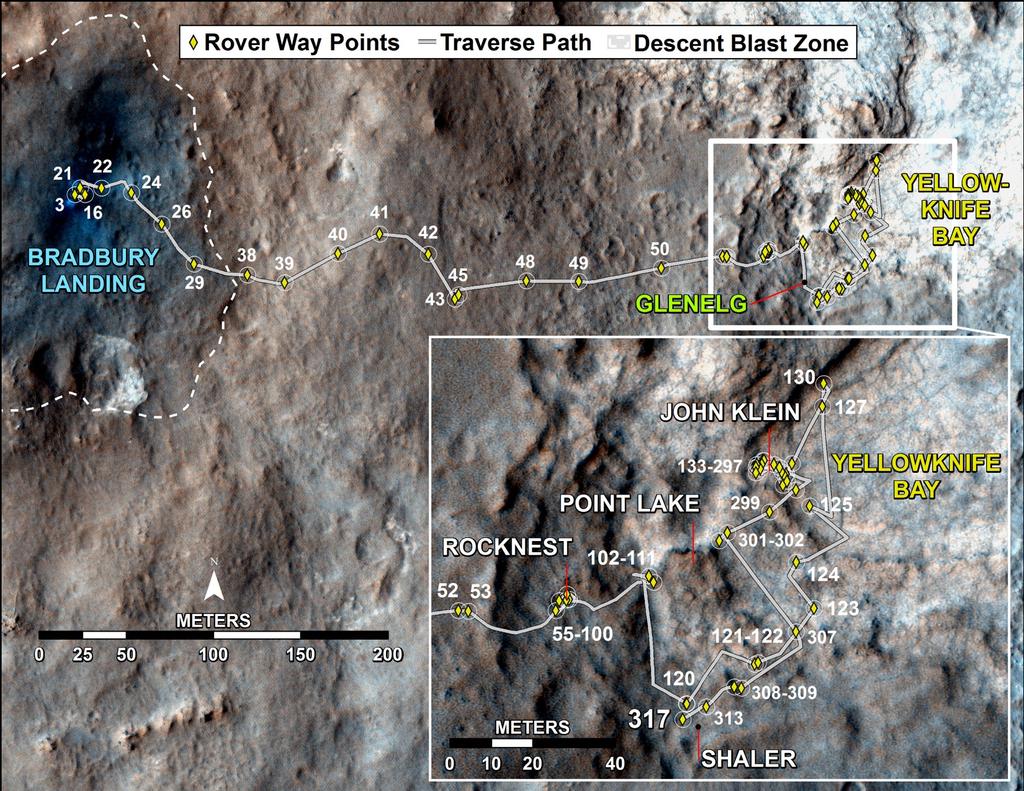 |
| A map showing the progress made by Curiosity up to sol 317 (NASA/JPL/UA) |
 |
| Sol 317 navigation mosaic of Point Lake (the cliff-like outcrop to the left side) (NASA/JPL/mosaic by Abraham Samma) |
 |
| A mosaic showing details of Point Lake. The image has been white balanced to make the scene appear as it would if it were shot on Earth. The scale bars are 50cm. A full resolution version is here. (NASA/JPL/MSSS) |
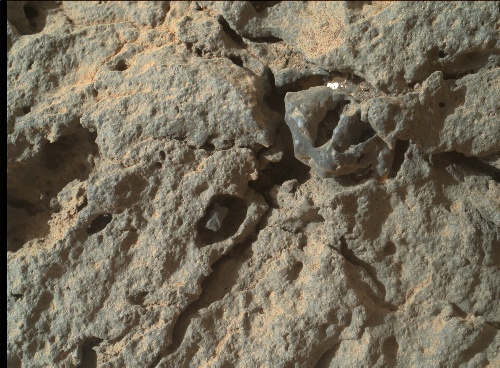 |
| MAHLI image taken on sol 303. The lens of the camera was positioned no closer than 15cm away from the rock face. Notice the holes some of which appear to contain eroded out pebbles. (NASA/JPL/MSSS) |
 |
| A white balanced mosaic showing Shaler. The images were taken by the rover during sol 120 (NASA/JPL/MSSS) |
 |
| Sol 317 Mastcam left eye view of Shaler's layers (NASA/JPL/MSSS/mosaic by Abraham Samma) |
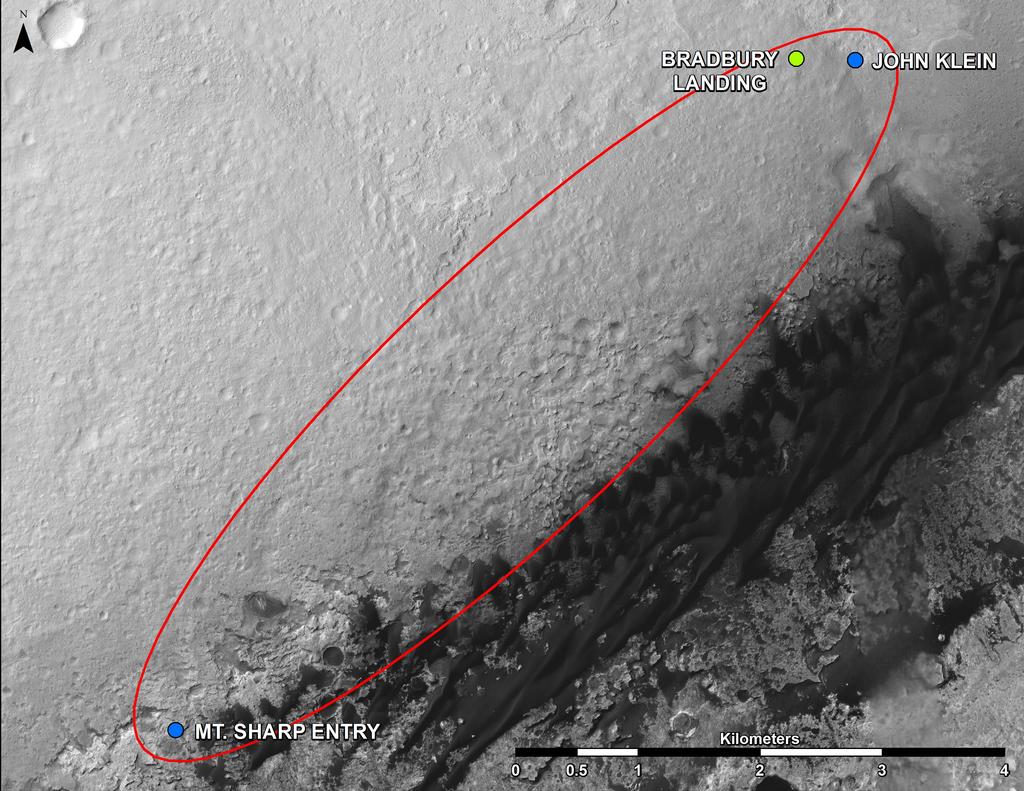 |
| Orbital image from MRO's CTX imager showing the area (area within the red ellipse) Curiosity will probably traverse before it gets to the entry point onto the slopes (NASA/JPL/UA) |